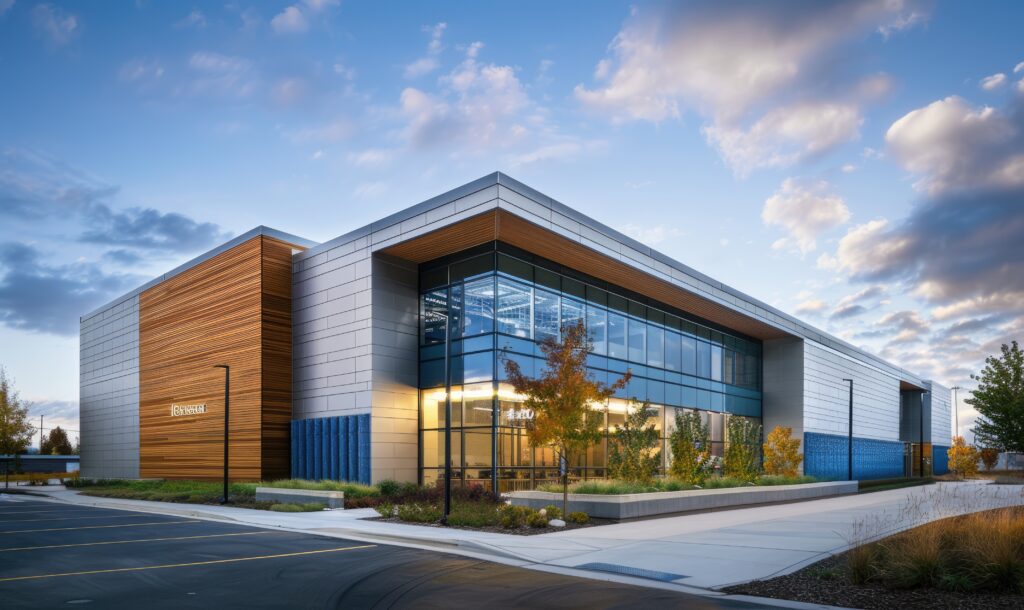One of the most important steps in building a tech business is securing data. This choice is critical for ensuring smooth operations, efficient data handling, and security. A data center serves as the backbone of digital infrastructure, hosting the servers and networks that power websites, applications, and cloud services.
The selection and location of a data center site directly affects its performance, reliability, and cost. As a business owner, you’ll need to consider multiple factors before making the final choice, and that’s what we are going to discuss in this article of Dana Cloud: how are data centers different based on companies’ needs, and what factors to take into consideration?
Certainly, here’s a table summarizing Data Center Site Selection:
| Factor | Description | Importance |
|---|---|---|
| Business Needs | Capacity, growth projections, applications/services to be supported. | High: Determines the type and size of data center required. |
| Geographic Location | Proximity to operations, customer base, network hubs, avoiding natural disaster zones. | High: Impacts performance, reliability, and disaster risk. |
| Connectivity Options | Reliable, high-speed internet with multiple carriers for low latency and redundancy. | High: Enhances data transmission speed and uptime. |
| Power Availability | Stable power supply, access to renewable energy, sufficient capacity for current and future needs. | High: Ensures uninterrupted operations and reduces costs. |
| Cooling and Climate | Local climate impacting cooling costs, availability of efficient cooling systems. | Medium: Affects operational expenses and equipment longevity. |
| Security and Compliance | Meeting physical and cybersecurity standards, compliance with relevant regulations. | Medium: Protects data from unauthorized access and ensures legal adherence. |
| Scalability | Adequate space and infrastructure to accommodate future growth and evolving technologies. | Medium: Allows for data center expansion as business needs change. |
What’s a Data Center Site?
A data center site is a physical location (site) where the infrastructure supporting computing, storage, and networking is housed. The location has servers, storage systems, networking equipment, and security mechanisms, all essential for running applications and managing data. The choice of a data center site involves evaluating factors such as security, power, connectivity, and environmental considerations.
Types of Data centers take various forms depending on users’ specific needs. They can range from hyper-scale facilities that serve global companies to smaller edge data centers designed to reduce latency for local users. Additionally, some are colocation centers where companies rent space, while others are privately owned and operated.
Related article: What Is a Micro Data Center?
Why Choosing the Right Data Center Site Matters
Choosing the right site for a data center is a critical decision that significantly impacts its performance, efficiency, and longevity. Factors such as location, climate, power availability, and network connectivity play a crucial role in ensuring uninterrupted operations and cost-effectiveness. A well-chosen site minimizes risks from natural disasters, such as floods or earthquakes, and provides reliable access to cooling and energy resources, which are vital for maintaining optimal performance. Additionally, proximity to users and businesses can reduce latency and improve service delivery. By carefully evaluating site options, organizations can build a resilient, scalable, and efficient data center that supports long-term growth. In summary, selecting a data center should be important to you because the de
- Minimizes Risk: A well-chosen site reduces vulnerability to natural disasters, ensuring operational continuity.
- Improves Efficiency: Strategic location optimizes cooling and power resources, reducing energy costs.
- Enhances Connectivity: Proximity to network hubs improves latency and ensures seamless data transmission.
- Supports Scalability: Adequate space and infrastructure allow for future growth.
- Ensures Compliance: Meets regulatory requirements and sustainability standards in the region.
- Reduces Costs: Lower operational expenses by leveraging local energy efficiencies and tax incentives.
How do I choose a data center site?
We now know that selecting a data center is a vital process. But how and where should one start? Is there a step by step guide to tell you how to begin? If you have not chosen yet and feel like you’re walking in the light, we have a guiding light for you. The strategic process below, ensures a resilient and cost-effective data center solution aligned with your business goals.
- Assess Business Requirements: Start by identifying your organization’s needs, such as capacity, growth projections, and specific applications or services the data center will support.
- Evaluate Geographic Location: Consider proximity to your operations, customer base, and network hubs. Avoid regions prone to natural disasters like floods, earthquakes, or hurricanes.
- Check Connectivity Options: Ensure the site provides access to reliable and high-speed internet with multiple carriers to reduce latency and improve redundancy.
- Analyze Power Availability: Look for a site with a stable power supply and access to renewable energy sources. Confirm that power capacity supports both current and future needs.
- Examine Cooling and Climate: The local climate impacts cooling costs. Cooler environments can reduce operational expenses, while efficient cooling systems ensure equipment longevity.
- Review Security and Compliance: Confirm that the site meets physical and cybersecurity standards. It should align with industry regulations like ISO 27001, HIPAA, or GDPR.
- Consider Scalability: Opt for a site with enough space to accommodate future growth and evolving technologies.
- Engage Experts: Collaborate with data center consultants or providers for tailored advice. Site visits and thorough audits are essential before finalizing a decision.
Read more: What is Hyperscale data center?
How infrastructure for a data center is connected
The infrastructure of a data center connects various systems and components to ensure seamless operations. It integrates both physical and logical elements:
-
Physical Infrastructure:
- Power Systems: Components like Uninterruptible Power Supplies (UPS), Power Distribution Units (PDUs), and backup generators ensure a stable power supply.
- Cooling Systems: Solutions such as CRAC units, CRAH units, and hot/cold aisle containment manage heat effectively to optimize device performance and longevity.
- Cabling and Connectivity: Copper and fiber-optic cables interconnect all equipment, with structured cabling strategies ensuring efficiency and preventing airflow obstructions.
-
Logical Infrastructure:
- Servers: Rack-mounted and blade servers process and store data.
- Storage: Solutions like DAS, NAS, and SAN handle data storage depending on operational needs.
- Networking Equipment: Routers and switches enable data flow between components and external networks.
This integration supports the reliability, scalability, and efficiency required for modern data center operations.
Final Thoughts
Data center site selection is a pivotal step in ensuring efficient and reliable operations. By carefully evaluating factors such as location, power availability, connectivity, and disaster resilience, businesses can optimize performance and scalability. A well-planned site not only supports current needs but also adapts to future growth and technological advancements. Partnering with experts and adhering to best practices ensures the infrastructure aligns with industry standards, enhancing operational efficiency and sustainability. Ultimately, the right site lays a solid foundation for long-term success, delivering robust solutions that meet the dynamic demands of a data-driven world.
Read more: What is a Colocation Data Center?
FAQ
-
What role does energy efficiency play in site selection?
Energy efficiency minimizes operational costs and reduces environmental impact. Selecting locations with access to renewable energy, cooler climates, or energy-efficient infrastructure can help achieve sustainability and lower long-term expenses.
-
How do government regulations affect site selection?
Government policies on data privacy, taxation, zoning, and environmental compliance can impact site operations. Researching local laws ensures compliance and helps avoid legal challenges or unplanned operational costs.
-
What is the significance of proximity to end-users?
Proximity to users reduces latency and enhances performance, especially for applications requiring real-time data processing. This is particularly vital for industries like finance, gaming, and e-commerce.
-
How do natural disaster risks influence site choices?
Sites in areas prone to floods, earthquakes, or hurricanes require additional data center design investments for resilience. Opting for low-risk zones ensures data availability and reduces potential downtime during disasters.


